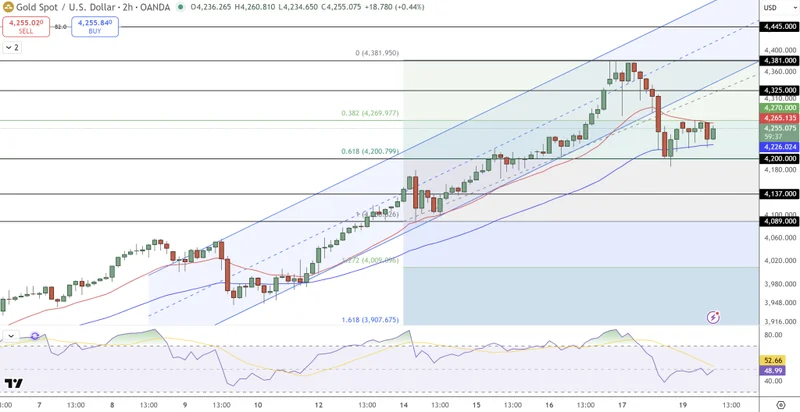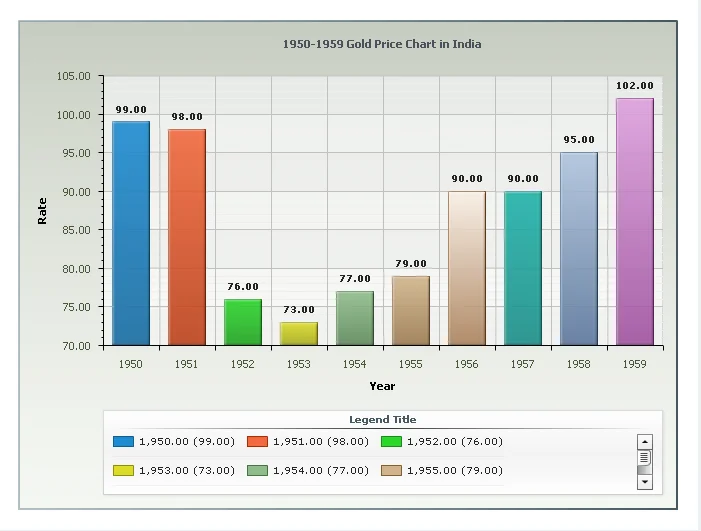Article Directory
Gold’s Wild Ride Isn't About Money—It's a System on the Brink of an Upgrade
I want you to picture something. Imagine the global economy as a massive, intricate piece of software that’s been running for decades. It’s complex, it’s powerful, but it was written on a framework that’s starting to show its age. Now, imagine that deep within this code, there’s a single, ancient variable called “gold.” For years, it’s been the ultimate constant, the failsafe. When other parts of the system flicker, this variable holds its value.
But what happens when that constant starts acting… erratically?
That’s exactly what we’re seeing right now. We see gold prices hitting a staggering $4,356 per ounce, then plummeting nearly 9% in the largest single-day loss in years (Gold Short-term Outlook: XAU/USD Crash Faces First Test of Support - FOREX.com). We see it jump over $1,500 in a single year. You can almost feel the tension in the air, the collective breath-holding as traders watch the numbers flash across their screens—a chaotic dance of red and green that signifies something far more profound than simple market volatility. When I saw that chart, the jagged peak followed by that brutal cliff, I honestly just sat back in my chair, speechless for a moment. This is the kind of breakthrough that reminds me why I got into this field in the first place—because this isn't just a story about money. This is the story of a system under immense stress, sending us signals that it’s on the verge of a fundamental transformation.
The System's Final Error Log
For half a century, since we untethered our currencies from it in 1971, gold has played a very specific role. It’s been the ultimate hedge. It’s the financial world’s emergency backup generator. When inflation spikes, when markets panic, when geopolitical uncertainty reigns, you fire up the generator. It’s not flashy—averaging a 7.9% return against the stock market’s 10.7%—but it’s supposed to be reliable. It’s a physical, tangible store of value. In simpler terms, it’s the one thing you can supposedly count on when the digital world gets messy.
So, what are we to make of it when the backup generator itself starts sputtering and roaring with the volatility of a tech startup?

This isn't a sign of failure. I believe it's a signal of transition. The chaos we're witnessing is the old system’s final, frantic error log before a mandatory reboot. The surge to over $4,300 isn't just a flight to safety; it’s a massive influx of energy and attention being poured into an old protocol, pushing it to its limits. The subsequent sell-off isn't a crash; it’s a violent recoil, a system correction of immense proportions. Are we simply supposed to believe this is just about the upcoming CPI data or another FOMC decision? Or is it possible that these traditional economic levers are now toggling switches connected to a machine far larger and more complex than they were ever designed to control?
This is the core question we need to be asking. We’re not just watching a commodity’s price fluctuate. We are watching the very definition of “value” being stress-tested in real-time, on a global scale.
The Great Rebalancing Act
Think of it this way: what we’re doing is like trying to run a quantum computing algorithm on an abacus. We have an ancient, physical asset—gold—and we’re desperately trying to make it behave with the speed and liquidity of a purely digital one. We trade it through ETFs, as financial advisor James Taska notes, to make it "much easier to rebalance," and we track its "spot price" for instant transactions. We’re trying to pour a solid element into a liquid, instantaneous digital container, and the turbulence we’re seeing is the inevitable friction of that impossible alchemy—it's the sound of two fundamentally different operating systems trying to communicate and it's loud and it's messy and it's absolutely fascinating.
This is the great rebalancing. It’s not just about rebalancing a portfolio between stocks and bonds. It’s about rebalancing our very concept of trust between the physical and the digital, the centralized and the decentralized, the old and the new. Gold, silver ($53/oz), and platinum ($1,623/oz) are all part of this old guard of tangible value. But gold is the standard-bearer. Its current volatility is a reflection of the immense energy required for this shift.
This transition isn't without its risks, of course. The immense forces at play here have real-world consequences for people’s savings, their retirements, and their ability to plan for the future. Navigating this period requires more than just clever trading algorithms; it demands a new level of financial literacy and, more importantly, a shared vision for what kind of economic system we want to build next. What does a truly 21st-century store of value look like? And how do we build a bridge from here to there without leaving millions behind?
This Isn't a Crash, It's a Reboot
Let’s be clear. The violent swings in the gold market aren't the death rattle of an old asset. They are the birth pangs of a new financial architecture. The system isn't breaking; it's upgrading. This chaos is the necessary, messy, and ultimately productive process of rebooting our global economic operating system. Gold is no longer just a hedge against inflation—it has become the ultimate benchmark against which the stability, speed, and trustworthiness of our future digital value systems will be measured. We are living through the moment of recalibration, and it’s one of the most exciting transformations I expect to see in my lifetime.

